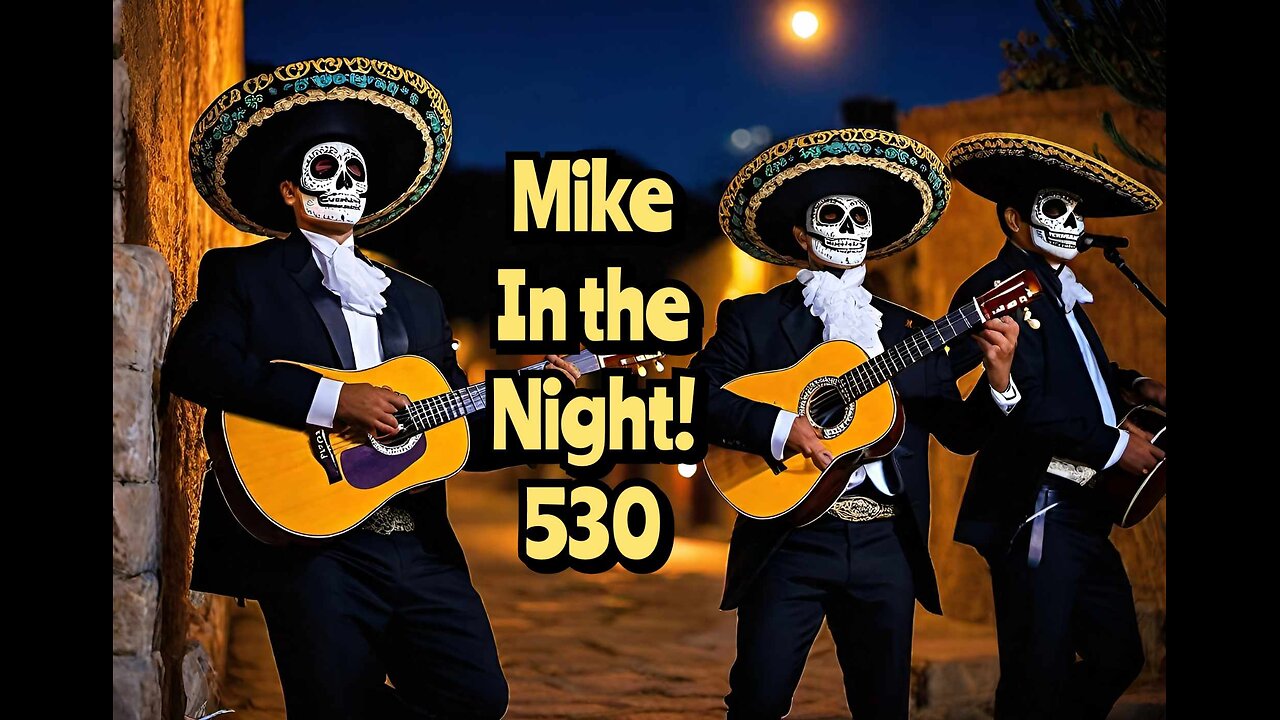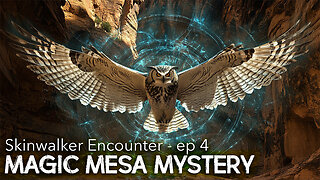Premium Only Content

Mike in The Night E530 - Ghost to Ghost, Halloween Special , Call ins
Buy Mike A Coffee -
https://donorbox.org/buy-me-a-coffee-53
Link to the Most Powerful Glutathione in the World -
https://mikeinthenight.neumi.com/home
#mikeinthenight #mikemartins
"Día de los Muertos," also known as the Day of the Dead, is a vibrant and deeply rooted Mexican holiday that celebrates and honors deceased loved ones. It is a unique blend of indigenous Mesoamerican beliefs and Catholicism, creating a rich cultural tapestry that reflects Mexico's complex history.
**Origins and History:**
Día de los Muertos has ancient origins, dating back over 3,000 years to pre-Columbian times. The Aztecs, Toltecs, and other Mesoamerican cultures practiced rituals honoring the deceased, believing that death was a natural phase of life's continuum.
When the Spanish conquistadors arrived in the early 16th century, they attempted to supplant these indigenous practices with their own Catholic traditions, particularly All Saints' Day (November 1st) and All Souls' Day (November 2nd). These days were dedicated to honoring saints and praying for the souls of the departed.
**The Blend of Cultures:**
Over time, the indigenous and Catholic practices merged, creating Día de los Muertos as it is known today. The holiday is a testament to the resilience and adaptability of Mexican culture, which managed to preserve its indigenous roots despite centuries of external influence.
**Symbolism and Iconography:**
Central to Día de los Muertos is the belief that the souls of the departed return to the world of the living to be reunited with their families. To facilitate this reunion, families create ofrendas, or altars, adorned with a variety of symbolic elements.
1. **Marigolds (Cempasúchil):** These vibrant orange flowers are thought to guide spirits back to the world of the living with their strong scent and color. They are often used to create elaborate floral arrangements on ofrendas.
2. **Candles and Incense:** Lit candles and incense serve as beacons to guide spirits back to their families. They also represent hope, faith, and remembrance.
3. **Sugar Skulls (Calaveras de Azúcar):** These intricately decorated, colorful skulls made from sugar are a ubiquitous symbol of Día de los Muertos. They often bear the names of deceased loved ones and are used to adorn ofrendas.
4. **Pan de Muerto (Bread of the Dead):** This sweet, anise-flavored bread is a culinary centerpiece of the holiday. Its round shape symbolizes the cyclical nature of life and death, and the dough is often fashioned into bone-like shapes.
5. **Photographs and Personal Items:** Families place photographs of their departed loved ones on the ofrenda to help the spirits recognize and find their way home. Personal items, like clothing or favorite possessions, are also included.
6. **Favorite Foods and Drinks:** The ofrenda often features the deceased's favorite foods and drinks. This is meant to nourish the spirits after their long journey back to the living world.
**Celebrations and Traditions:**
Día de los Muertos is celebrated with a series of rituals and activities that vary across different regions of Mexico and among families. However, there are some common practices:
1. **Graveyard Visits:** Families often visit cemeteries to clean and decorate the graves of their loved ones. They spend time there, reminiscing and sharing stories about the deceased.
2. **Altar Making:** Families and communities come together to create ofrendas. These are often placed in homes, but some are also set up in public spaces or even at the gravesites.
3. **Face Painting:** Elaborate face painting, resembling sugar skulls, is a popular tradition, especially among children. This practice is not only a form of artistic expression but also a way to symbolize the merging of life and death.
4. **Music and Dance:** Festive music and traditional dances are integral parts of the celebration. Mariachi bands and other musicians often play lively tunes that evoke both joy and nostalgia.
5. **Parades and Processions:** In some regions, particularly Oaxaca, there are lively parades with participants wearing elaborate costumes and masks, celebrating the cycle of life and death.
6. **Feasting and Sharing:** Families come together to share meals, often consisting of traditional Mexican dishes. It is a time for togetherness and celebration of life.
**Significance and Beliefs:**
Día de los Muertos reflects a unique perspective on death. It is not seen as an end, but as a natural part of the human experience. The holiday embodies the belief that the souls of the departed can continue to be a part of the lives of the living, providing guidance, protection, and love.
The blending of indigenous beliefs with Catholicism illustrates Mexico's ability to adapt and synthesize different cultural elements into a harmonious whole. This synthesis is a testament to the resilience and strength of Mexican culture.
**Global Impact:**
In recent decades, Día de los Muertos has gained international recognition and popularity. It has been embraced by various communities around the world as a way to celebrate and remember departed loved ones, transcending cultural boundaries.
**Conclusion:**
Día de los Muertos is a unique and deeply meaningful holiday that reflects Mexico's rich cultural heritage. It embodies a distinctive perspective on life and death, emphasizing the ongoing connection between the living and the departed. Through its vibrant symbolism, heartfelt rituals, and communal celebrations, the holiday stands as a testament to the resilience and adaptability of Mexican culture, and it continues to inspire and resonate with people around the world.
-
 5:55
5:55
Mike Martins Channel
5 days ago $0.29 earnedCanada Begins Imprisoning Citizens, who Refuse to Take Medication Ordered By Government
5066 -
 10:17
10:17
Dermatologist Dr. Dustin Portela
1 day agoOlay Cleansing Melts: Dermatologist's Honest Review
1.92K -
 1:02:20
1:02:20
Trumpet Daily
1 day ago $5.25 earnedObama’s Fake World Comes Crashing Down - Trumpet Daily | Dec. 20, 2024
11K14 -
 6:29
6:29
BIG NEM
17 hours agoCultivating God Mode: Ancient Taoist NoFap Practices
2.17K1 -
 30:53
30:53
Uncommon Sense In Current Times
1 day ago $0.02 earned"Pardon or Peril? How Biden’s Clemency Actions Could Backfire"
10.1K -
 40:01
40:01
CarlCrusher
15 hours agoSkinwalker Encounters in the Haunted Canyons of Magic Mesa - ep 4
11.3K2 -
 59:44
59:44
PMG
1 day ago $0.16 earned"BETRAYAL - Johnson's New Spending Bill EXPANDS COVID Plandemic Powers"
30.7K -
 6:48:50
6:48:50
Akademiks
13 hours agoKendrick Lamar and SZA disses Drake and BIG AK? HOLD UP! Diddy, Durk, JayZ update. Travis Hunter RUN
151K27 -
 11:45:14
11:45:14
Right Side Broadcasting Network
9 days agoLIVE REPLAY: TPUSA's America Fest Conference: Day Three - 12/21/24
336K28 -
 12:19
12:19
Tundra Tactical
13 hours ago $12.74 earnedDaniel Penny Beats Charges in NYC Subway Killing
60K12